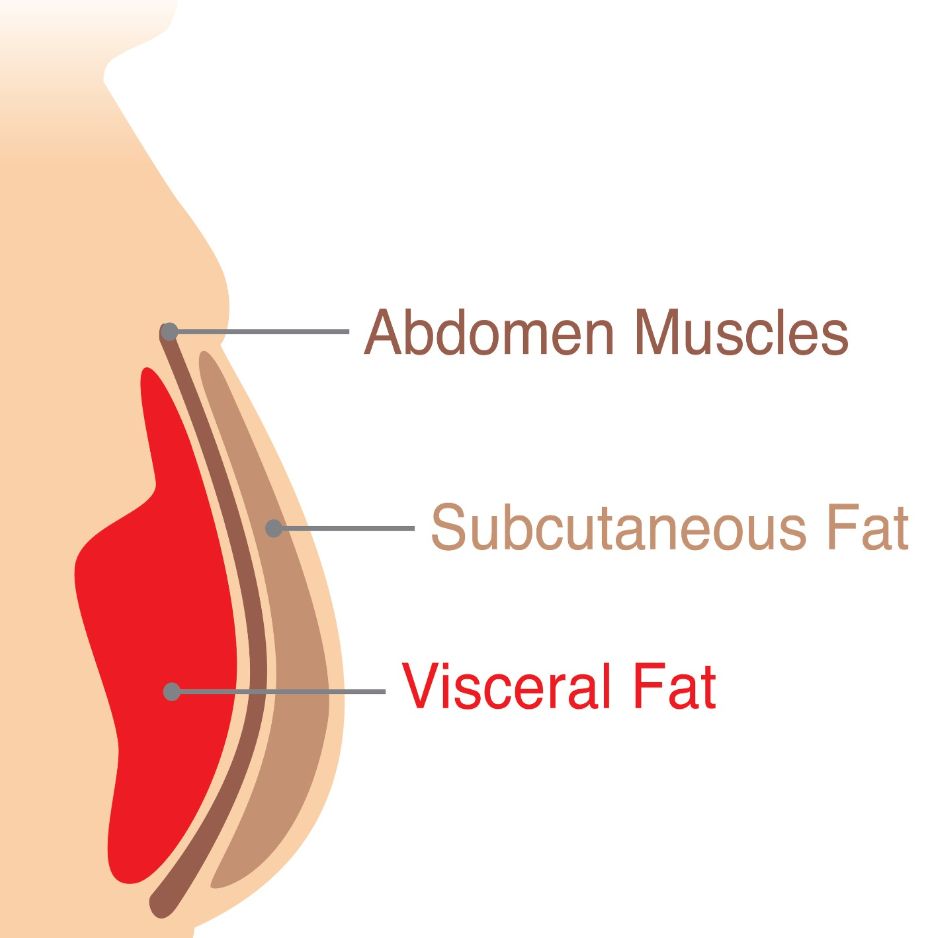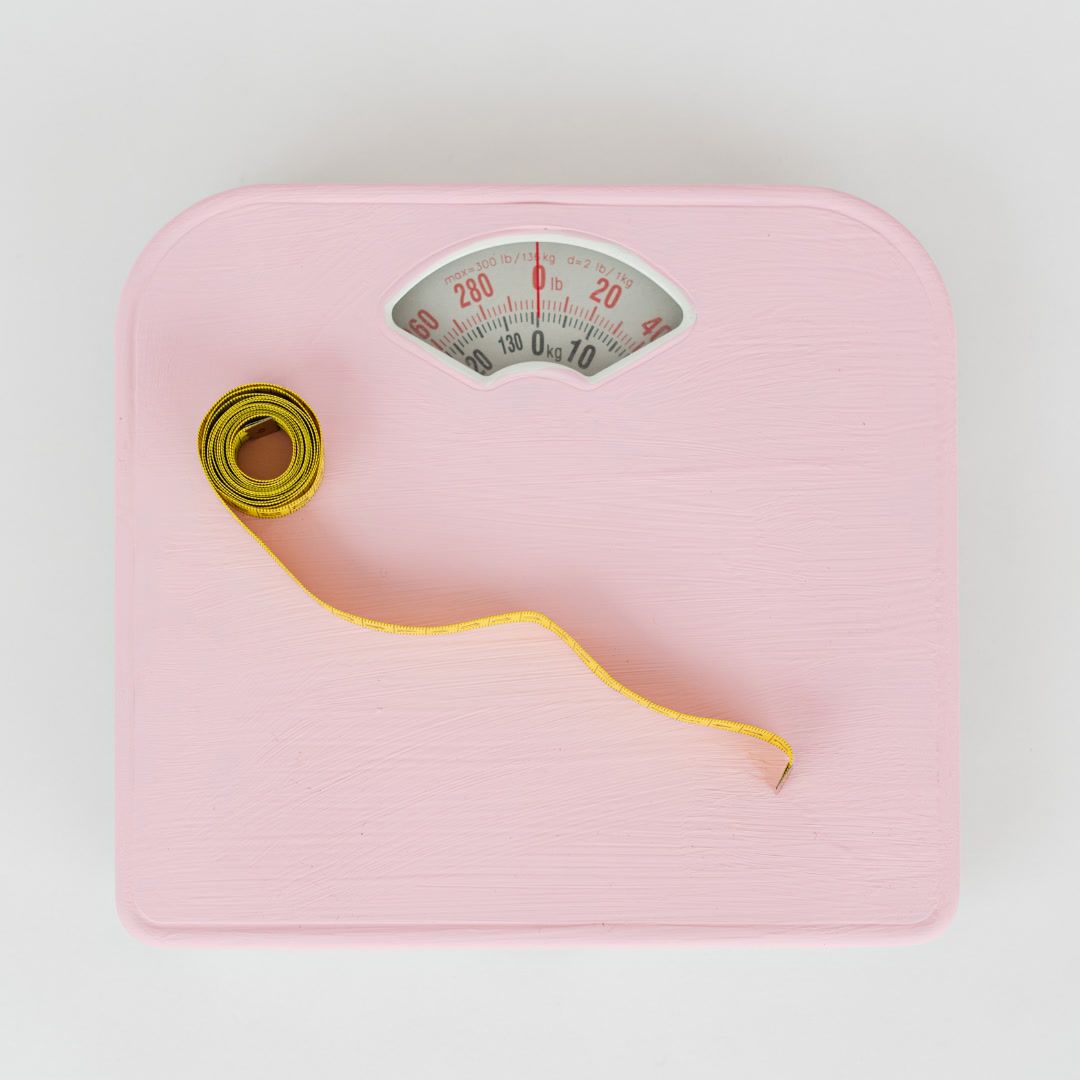The Ultimate Guide to Male Body Types

The Ultimate Guide to Male Body Types: From Somatotypes to Style
Ever wonder why your gym buddy gains muscle like a machine while you're grinding for every ounce of progress? Or why certain clothes look effortlessly sharp on some guys but leave you feeling like you're wearing something baggy and ill-proportioned? The answer often lies in understanding your male body type—a classification system that explains how your natural build affects everything from metabolism to muscle-building potential to which shirt cuts actually flatter your frame.
Male body types are typically classified using two systems: somatotypes (ectomorph, mesomorph, endomorph) which focus on metabolism and muscle-building potential, and body shapes (rectangle, triangle, inverted triangle, oval, trapezoid) which emphasize proportions for styling purposes.
This comprehensive guide breaks down the science behind male body types, covering both the fitness-focused somatotype system and the fashion-oriented body shape classifications. Whether you're looking to optimize your training, dial in your diet, or simply dress better for your build, understanding your body type is the first step toward working with your genetics instead of against them.
Quick Takeaways
- Two main classification systems exist: Somatotypes (fitness/health focus) and body shapes (fashion focus)
- Somatotypes describe your natural metabolism and muscle-building tendencies: ectomorph (lean), mesomorph (muscular), endomorph (stocky)
- Body shapes focus on proportions: rectangle, triangle, inverted triangle, oval, and trapezoid
- Most men are combinations rather than pure types—you might be an ecto-mesomorph or have a rectangle-oval hybrid build
- Your body type influences training approach, nutrition needs, and optimal clothing styles
- DEXA scans provide precise data on your current muscle and fat distribution to guide your approach
Understanding Somatotypes: The Science of Body Composition
The somatotype system was originally developed by psychologist William Herbert Sheldon in the 1940s to classify body types based on physical characteristics. While Sheldon's original theories linking body types to personality have been completely debunked, the framework is still used in fitness to describe metabolic tendencies, with some modern studies exploring how somatotypes correlate with athletic performance.
A 2024 study on elite athletes found that different somatotype components were associated with distinct body composition patterns and nutritional needs, supporting the framework's practical applications in fitness contexts.
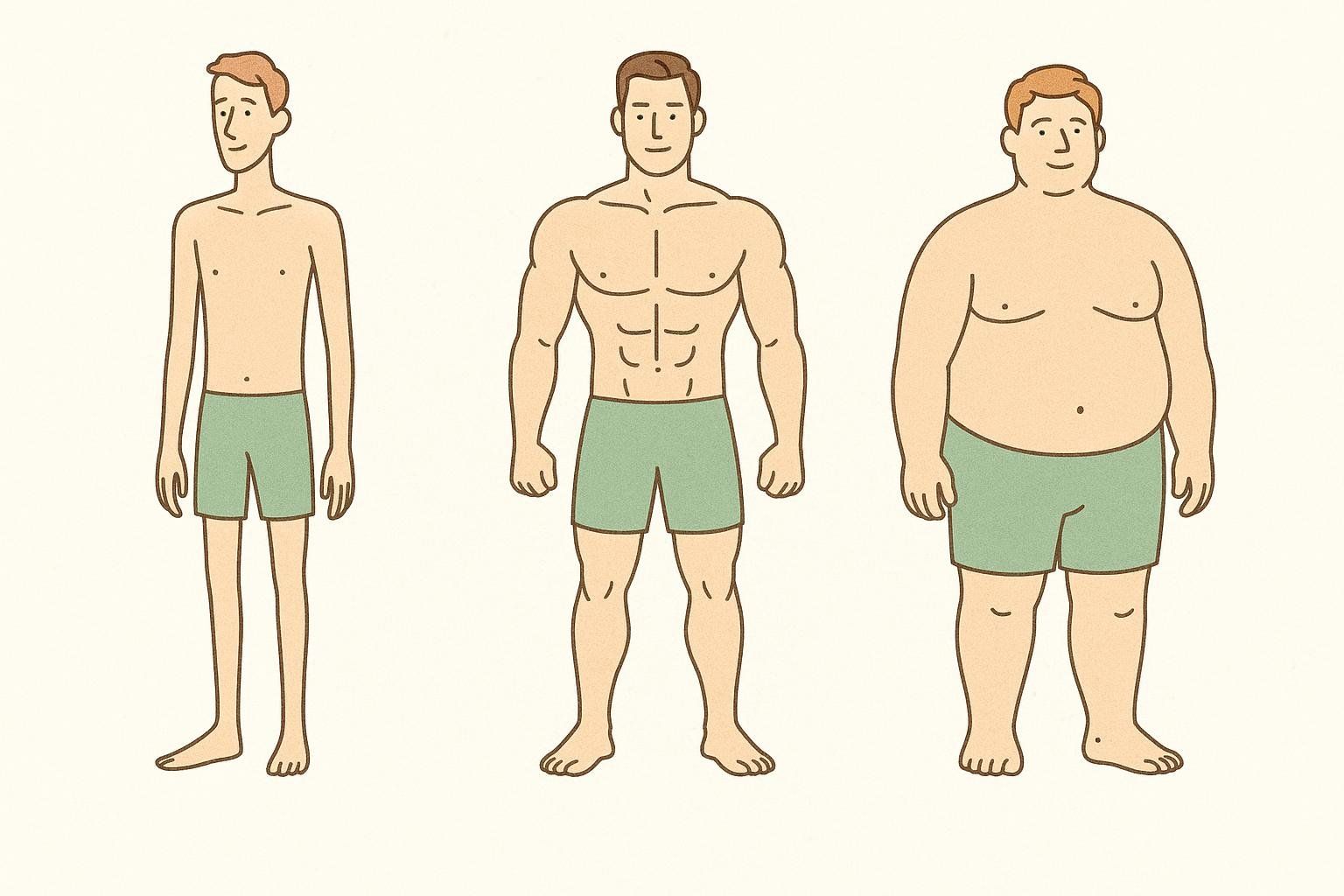
The Three Primary Somatotypes
Ectomorph: The Hard Gainer
Ectomorphs typically display:
- Long, lean limbs with narrow shoulders and hips
- Minimal muscle mass and low body fat naturally
- Fast metabolism that burns calories efficiently
- Difficulty gaining weight (both muscle and fat)
- Tall, linear build
Training implications:
- Focus on compound movements and progressive overload
- Limit cardio to preserve calories for muscle growth
- Use longer rest periods (2-3 minutes between sets)
- May benefit from 3-4 strength training sessions per week
- Prioritize adequate rest and recovery
Nutritional needs:
- High calorie intake with emphasis on complex carbs and quality proteins
- Significant calorie surplus often required to support muscle growth
- Frequent meals to maintain energy levels
- Higher carbohydrate intake (45-50% of calories)
- Sufficient protein is essential, with evidence supporting ranges of 1.6-2.2 g/kg of bodyweight for muscle development

Mesomorph: The Natural Athlete
Mesomorphs are characterized by:
- Naturally muscular build that responds quickly to training
- Moderate metabolism with ability to gain/lose weight relatively easily
- Athletic appearance even without extensive training
- Well-defined muscle separation
- Genetic predisposition for muscle development
Training implications:
- Respond well to varied training styles
- Can handle higher training volumes and faster recovery
- Benefit from mix of strength, hypertrophy, and athletic movements
- May benefit from 4-5 training sessions per week
- Can incorporate moderate cardio without compromising muscle gains
Nutritional needs:
- Balanced macronutrient approach works well
- Adequate protein is important for muscle maintenance and growth, with research supporting intakes in the 1.6-2.2 g/kg bodyweight range
- Strategic carb timing around workouts enhances performance
- Flexible approach allows for dietary variety
- Can adjust calories up or down based on specific goals

Endomorph: The Stocky Build
Endomorphs tend to have:
- Broader build with wider hips and shoulders
- Higher body fat percentage naturally
- Slower metabolism that stores energy efficiently
- Tendency to gain weight easily (especially fat)
- Rounder, softer appearance
Training implications:
- Benefit from higher training frequency (e.g., 4-6 sessions per week) and more cardio
- Circuit training and metabolic workouts particularly effective
- Shorter rest periods can increase calorie burn
- Emphasis on maintaining muscle while reducing fat
Nutritional needs:
- A controlled carbohydrate intake is often effective for managing body fat, as it can help regulate appetite and overall calorie consumption
- Focus on protein and healthy fats with strategic carb timing
- Higher protein intake is beneficial for satiety and muscle preservation during a caloric deficit, with studies supporting higher intakes for active individuals
- Emphasis on whole, unprocessed foods
- Strategic carb timing around workouts for performance
Further reading on male body types confirms that while no one fits perfectly into a single category, understanding your predominant tendencies can inform your approach to fitness and nutrition.
Fashion-Focused Body Shapes: Dressing Your Build
While somatotypes focus on metabolism and muscle-building potential, body shape classifications emphasize proportions for style purposes. According to Hockerty's comprehensive guide, there are five main male body shapes that determine which clothing styles will be most flattering.
Rectangle: The Balanced Build
Characteristics: Shoulders, waist, and hips of similar width creating a linear silhouette.
Style goals: Create the illusion of broader shoulders and a more defined waist.
What to wear:
- Structured blazers with shoulder padding to add width
- Patterned shirts and sweaters on top (stripes, checks, textures)
- Layered looks with vests, cardigans, or open shirts over t-shirts
- Straight-fit or slim-fit trousers in neutral colors
What to avoid:
- Oversized or boxy clothing that hides your natural lines
- All-black outfits that create a flat appearance
- Extremely tight clothing that emphasizes the lack of natural taper
Triangle (Pear): Bottom-Heavy Build
Characteristics: Broader waist and hips with narrower shoulders, creating a bottom-heavy appearance.
Style goals: Broaden the shoulders and balance upper and lower body proportions.
What to wear:
- V-neck tops and henley shirts to draw attention upward
- Structured jackets and blazers with defined shoulders
- Light colors or subtle patterns on top, dark colors below
- Straight-leg or slightly tapered dark trousers
What to avoid:
- Skinny jeans or tight trousers that emphasize hip width
- Bulky sweaters or hoodies that add volume to the midsection
- High-contrast belts that draw attention to your waistline
Inverted Triangle: The Athletic Build
Characteristics: Broad shoulders and chest with a narrower waist and hips, creating a strong upper body emphasis.
Style goals: Balance proportions by minimizing upper body bulk while adding visual weight to the lower half.
What to wear:
- Slim-fit shirts in darker colors to streamline the torso
- Lightweight fabrics that don't add unnecessary bulk
- Tapered or slim-fit trousers in lighter washes or colors
- Vertical stripes and subtle patterns rather than bold designs
What to avoid:
- Extra shoulder padding or structured blazers
- Ultra-skinny trousers that create too much contrast with your upper body
- Horizontal stripes across the chest and shoulders
Oval: The Fuller Midsection
Characteristics: Fuller midsection with a rounder torso shape.
Style goals: Create a streamlined appearance and draw attention away from the midsection.
What to wear:
- Darker colors and vertical stripes to create a lengthening effect
- Tailored blazers with structured shoulders to balance proportions
- Well-fitted dress shirts that skim the body without clinging
- Flat-front, straight-leg trousers in dark colors
What to avoid:
- Clingy fabrics around the waist that emphasize roundness
- Low-rise trousers that create a muffin-top effect
- Bright colors or large patterns across the midsection
Trapezoid: The V-Tapered Build
Characteristics: Broad shoulders, defined chest, and tapering waist and hips—a naturally balanced silhouette.
Style goals: Highlight these natural proportions with well-fitted clothing.
What to wear:
- Well-fitted shirts that showcase your silhouette without being tight
- Tailored blazers and classic cuts in quality fabrics
- Slim-fit or athletic-fit trousers that complement your build
- Most clothing styles work well with this naturally balanced build
What to avoid:
- Loose or baggy clothing that hides your natural proportions
- Overly tight clothing that appears strained
- Poor-quality fits that don't do justice to your build
The Science Behind Body Type Differences
Understanding why these body type differences exist can help you work more effectively with your natural build rather than against it.
Hormonal Influences
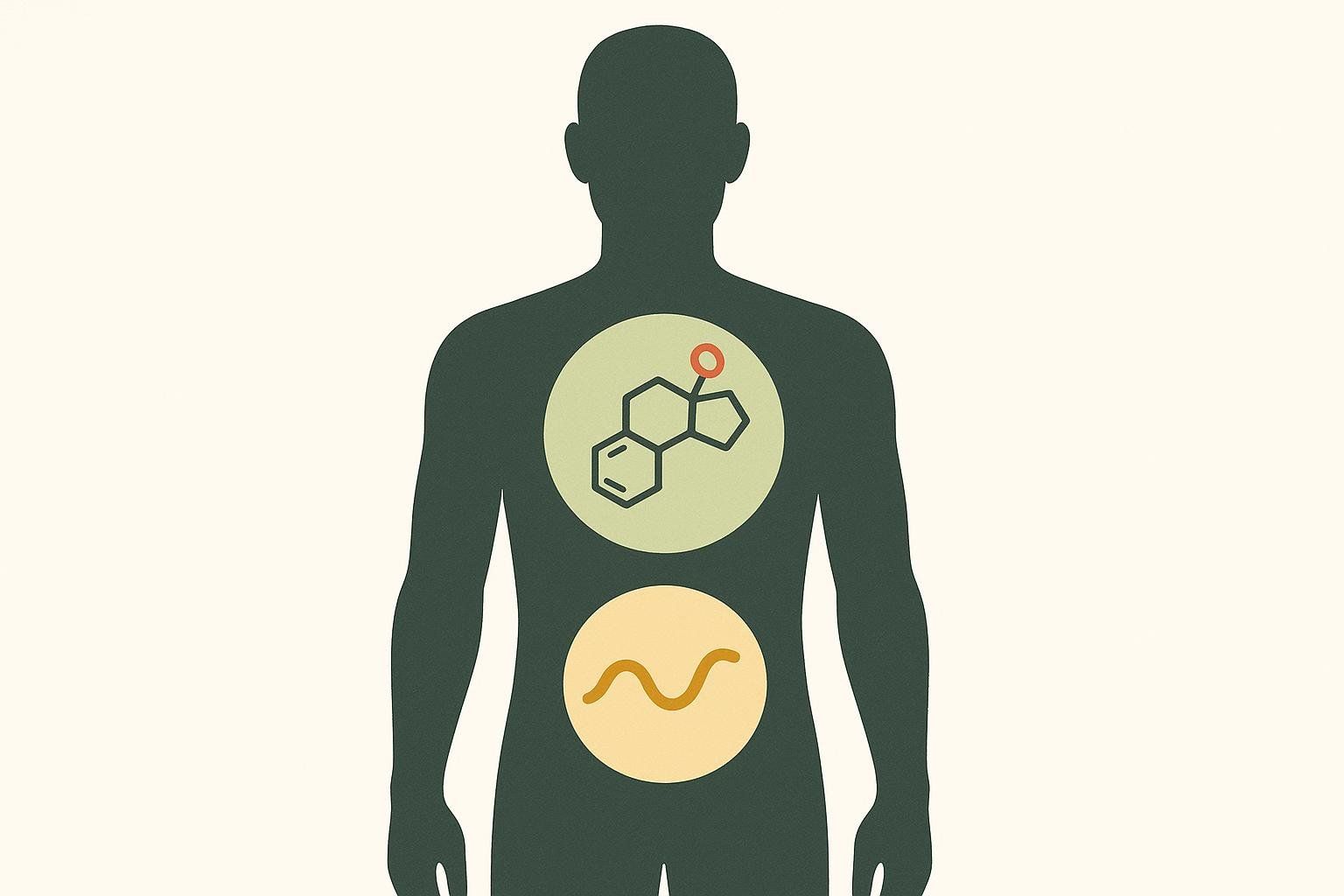
Testosterone levels significantly impact muscle-building potential and fat distribution. Studies on testosterone's effect on muscle protein synthesis show that testosterone increases muscle mass by enhancing muscle protein synthesis, which may contribute to mesomorphic characteristics like broader shoulders, easier muscle gain, and lower body fat percentages.
Insulin sensitivity varies between body types. Research into exercise metabolism found that ectomorphs tend to burn through carbohydrates more quickly for fuel during intense exercise, which helps explain their need for a higher carb intake to support muscle growth.
Genetic Factors
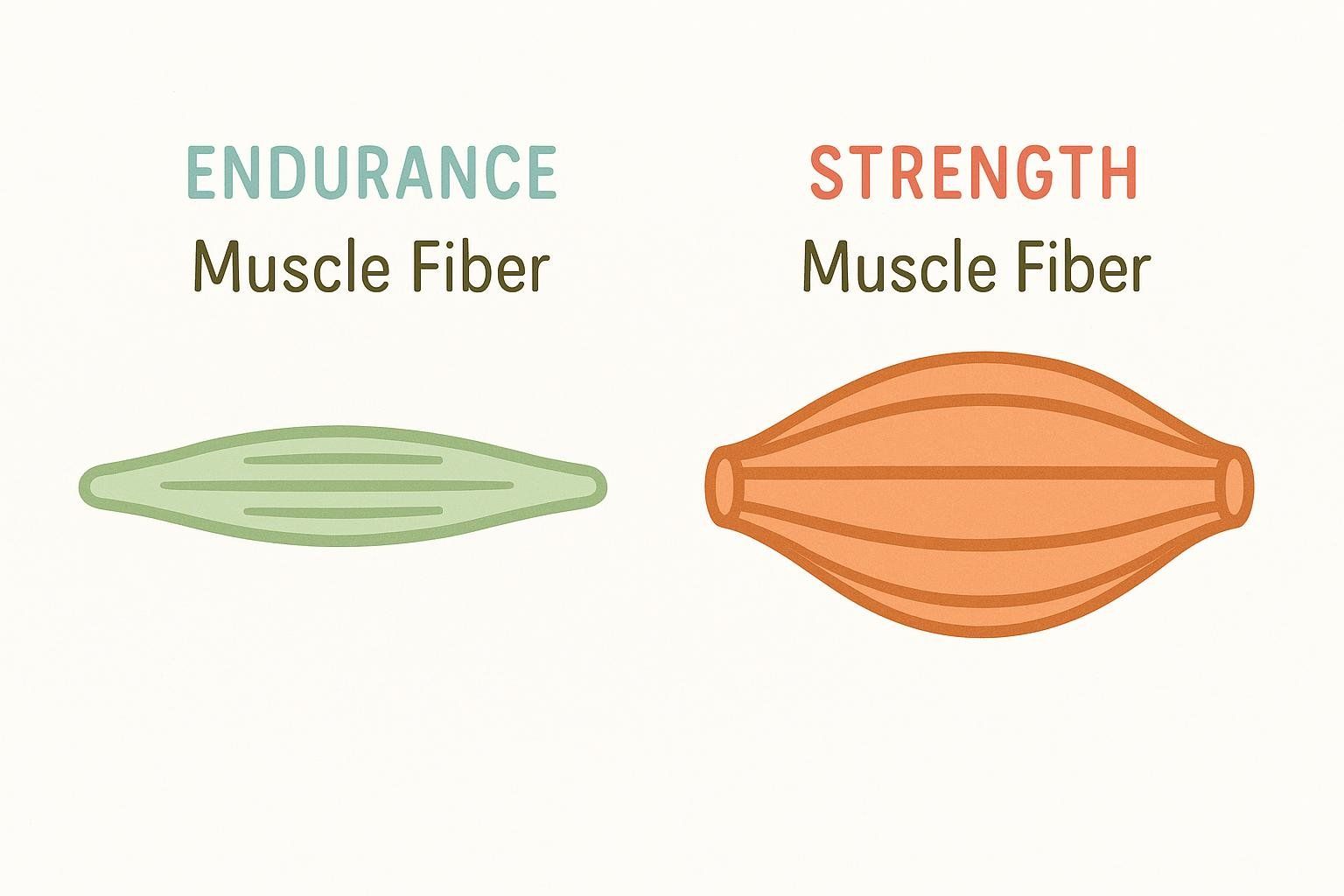
Muscle fiber types influence both appearance and training response. To understand this, it helps to know that slow-twitch fibers excel at endurance activities and fat burning, while fast-twitch fibers are built for power, strength, and muscle growth. Interestingly, research on muscle fiber composition in athletes found that endurance athletes exhibited a significantly higher percentage of slow-twitch muscle fibers compared to power athletes, supporting the idea that different body types may have different fiber distributions that influence their athletic capabilities and metabolic patterns.
Bone structure determines your basic frame. Some men naturally have broader clavicles (collar bones) and narrower pelvises, creating the classic V-taper associated with mesomorphic builds.
Ethnic Variations in Body Composition
Research shows that certain populations may have different body composition patterns at similar BMI levels. For example, studies of South Asian populations show they tend to have less lean muscle mass and more visceral fat compared to other ethnic groups, which may influence metabolic health risk at lower body weights.
These patterns reflect population-level trends, not individual destiny—genetics provide tendencies, not limitations.
Determining Your Body Type
The Quick Assessment Method
For Somatotype:
- Wrist and ankle joints (thin vs. thick)
- Natural physique without training (lean vs. muscular vs. soft)
- Weight gain/loss tendency (difficult vs. easy vs. very easy)
- Metabolism and appetite patterns (high vs. moderate vs. low)
For Body Shape:
- Measure your shoulders at the widest point
- Measure your waist at the narrowest point
- Measure your hips at the widest point
- Compare the ratios to identify your shape
The DEXA Advantage
For the most precise assessment of your current body composition, a DEXA (dual-energy X-ray absorptiometry) scan provides detailed data on:
- Exact muscle mass distribution
- Visceral fat levels
- Bone density
- Regional body fat percentages
This data helps you understand not just your body type classification, but your current starting point for any fitness or style goals.
Training for Your Male Body Type
These strategies provide a general framework. For a plan tailored to your body and goals, consider working with a qualified trainer.
Ectomorph Training Strategy
Focus: Muscle gain through progressive overload
Sample weekly structure:
- Monday: Upper body strength
- Tuesday: Rest or light activity
- Wednesday: Lower body strength
- Thursday: Rest
- Friday: Full body or upper/lower split
- Weekend: Rest and recovery
Mesomorph Training Strategy
Focus: Balanced muscle development and athletic performance
Sample weekly structure:
- Monday: Upper body strength
- Tuesday: HIIT cardio
- Wednesday: Lower body strength
- Thursday: Upper body hypertrophy
- Friday: Full body metabolic
- Weekend: Active recovery or sport
Endomorph Training Strategy
Focus: Fat loss while maintaining muscle mass
Sample weekly structure:
- Monday: Upper body circuit
- Tuesday: LISS cardio
- Wednesday: Lower body circuit
- Thursday: HIIT cardio
- Friday: Full body metabolic
- Saturday: Active recovery
- Sunday: Longer cardio session
Nutrition for Male Body Types
The following are illustrative examples. Individual calorie needs vary widely based on age, activity level, and metabolism. Consult a registered dietitian for personalized advice.
Ectomorph Nutrition
Goal: Caloric surplus for muscle gain
- Caloric approach: Research suggests that a caloric surplus facilitates lean mass gain, with many practitioners using 300-500 calories above maintenance
- Higher carbohydrate intake (45-50% of calories)
- Adequate protein to support muscle development
- Healthy fats (25-30% of calories)
- Frequent meals to maintain energy
Sample Day of Eating:
- Breakfast: Large oatmeal with berries and nuts
- Mid-morning: Protein shake with banana and milk
- Lunch: Grilled chicken, brown rice, and steamed vegetables
- Pre-workout: Greek yogurt with granola
- Post-workout: Protein shake with recovery carbs
- Dinner: Grilled salmon, quinoa, and roasted vegetables
- Evening: Casein protein shake with nut butter
Mesomorph Nutrition
Goal: Maintain calories for body recomposition, or create a small surplus for muscle gain or a small deficit for fat loss
- Caloric approach: Maintain baseline intake, or adjust by 200-300 calories based on specific goals
- A balanced approach to macronutrients typically works well
- Adequate protein for muscle maintenance and growth
- Strategic carb timing around workouts
- Flexible approach allows for variety
Sample Day of Eating:
- Breakfast: Eggs with whole grain toast and avocado
- Mid-morning: Greek yogurt with mixed berries
- Lunch: Turkey and quinoa salad with mixed greens
- Pre-workout: Apple with nut butter
- Post-workout: Protein shake with fruit
- Dinner: Grilled chicken with sweet potato and broccoli
- Evening: Cottage cheese with nuts (if needed)
Endomorph Nutrition
Goal: Fat loss through caloric deficit
- Caloric approach: Studies show fat loss is driven by a caloric deficit, commonly achieved with 300-500 calories below maintenance
- Some individuals find success with modified carbohydrate approaches to help manage appetite
- Emphasis on protein for satiety and muscle preservation
- Strategic carb timing (post-workout primarily)
- Focus on whole, unprocessed foods
Sample Day of Eating:
- Breakfast: Large vegetable omelet with spinach and peppers
- Mid-morning: Protein shake with leafy greens
- Lunch: Large salad with lean protein and oil dressing
- Pre-workout: Black coffee or small protein portion
- Post-workout: Protein shake with berries
- Dinner: Grilled fish with non-starchy vegetables
- Evening: Small handful of nuts or additional protein
Beyond Classification: The Hybrid Reality
Most men don't fit neatly into a single category. You might be:
- An ecto-mesomorph: Natural lean build but responds well to training
- A meso-endomorph: Muscular but prone to fat storage
- An endo-ectomorph: Higher metabolism but gains fat easily in certain areas
The key is identifying your dominant characteristics and adjusting your approach accordingly while remaining flexible as your body changes with training, age, and lifestyle factors.
Tracking Progress by Male Body Type
What to Measure
For all body types:
- Body weight (weekly, same time of day)
- Body fat percentage (monthly via DEXA or consistent method)
- Progress photos (monthly, same lighting/poses)
- Performance metrics (strength, endurance benchmarks)
Type-specific focuses:
- Ectomorphs: Emphasize muscle gain measurements and strength progression
- Mesomorphs: Balance muscle gain and fat loss metrics
- Endomorphs: Focus heavily on body fat reduction and metabolic markers
When to Reassess
Your body type classification can shift over time due to:
- Significant weight changes
- Aging and hormonal shifts
- Long-term training adaptations
- Lifestyle changes
Plan to reassess every 6-12 months, especially if you've made major changes to your training or nutrition approach.
Common Myths and Misconceptions
Myth 1: "Body types determine your fate"
Reality: Body type indicates tendencies, not limitations. With proper training and nutrition, any body type can achieve impressive results.
Myth 2: "Ectomorphs can eat anything"
Reality: While ectomorphs have higher metabolic rates, food quality still matters for health, energy, and muscle building.
Myth 3: "Endomorphs can't get lean"
Reality: Endomorphs may need to work harder and be more strategic, but achieving low body fat is absolutely possible.
Myth 4: "Mesomorphs don't need to try"
Reality: Even naturally gifted mesomorphs need consistent training and nutrition to maintain their physique and health.
Myth 5: "Body shape can't be changed"
Reality: While skeletal structure is fixed, muscle development and fat loss can significantly alter your apparent body shape.
Practical Application: Your 30-Day Quick Start
Week 1-2: Assessment and Planning
- Get baseline measurements and photos
- Consider a DEXA scan for precise body composition data
- Assess your current training and nutrition
- Identify your primary and secondary body type characteristics
Week 3-4: Implementation
- Adjust your training based on body type recommendations
- Modify nutrition approach using the guidelines above
- Begin tracking key metrics consistently
- Experiment with new clothing fits and styles
Days 28-30: Evaluation
- Review progress metrics
- Assess what's working and what isn't
- Make small adjustments for the next phase
- Plan your longer-term strategy
Advanced Considerations
Age and Body Type Evolution
As men age, body type characteristics can shift:
- Declining testosterone may push mesomorphs toward endomorphic patterns
- Slower metabolism affects all types but impacts endomorphs most
- Muscle loss can make ectomorphs appear even leaner while reducing mesomorphic advantages
Medical Factors
Certain health conditions can influence body type expression:
- Thyroid disorders significantly affect metabolic rate
- Insulin resistance may push any type toward endomorphic characteristics
- Hormonal imbalances can alter muscle-building capacity and fat distribution
If you suspect medical factors are influencing your body composition, consult with a healthcare provider for proper evaluation and treatment.
Sport-Specific Adaptations
Different sports can gradually shift your body type characteristics:
- Endurance sports may enhance ectomorphic traits
- Strength sports often develop mesomorphic qualities
- Skill-based sports may have less dramatic effects on body composition
The Bottom Line
Understanding your male body type—whether through the somatotype lens for fitness goals or the body shape approach for style choices—provides a valuable framework for making more effective decisions about training, nutrition, and wardrobe choices.
Remember that these classifications are starting points, not rigid rules. Your genetics provide the foundation, but your choices determine the outcome. Whether you're naturally lean, muscular, or stocky, the right combination of training, nutrition, and lifestyle factors can help you optimize your physique and present your best self to the world. Embrace your natural build rather than fighting against it—some of the most successful athletes, models, and style icons succeeded by maximizing what they naturally had.
Ready to get a precise picture of your current body composition? Book a DEXA scan at a BodySpec location near you and start your transformation with real data, not guesswork.
